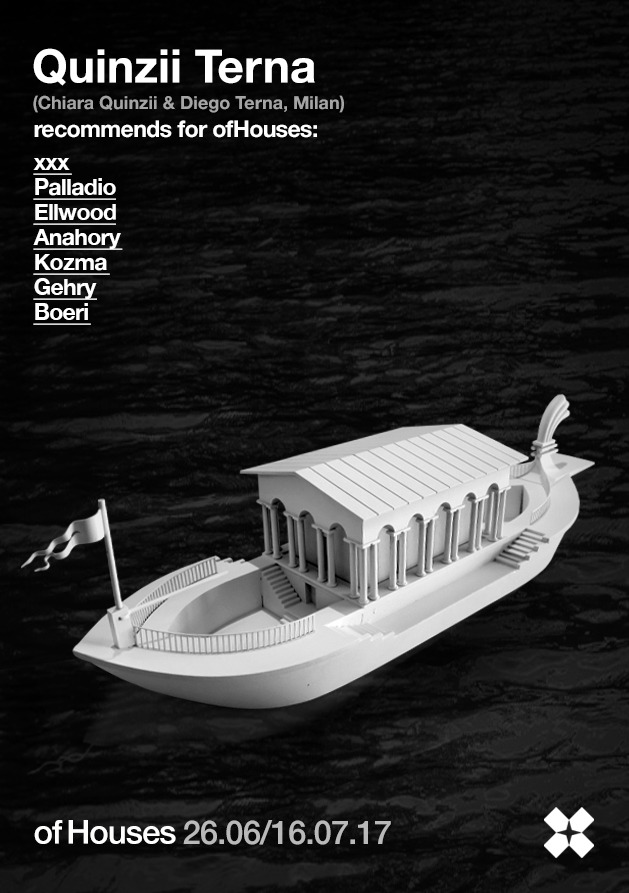QTA has been a guest curators for ofHouses, with a selection of 7 houses related to several forms of water.
2017

In 1804, the French architect Claude Nicolas Ledoux published Architecture considérée sous le rapport de l’art, de moeurs et de la législation, a text that contains 125 tables of drawings, compiled by Daniel Ramée in 1847. One of these drawings, lost in the overwhelming flow of prospects, plans and sections, tells an amazing story, which would become the basis of some of the most visionary projects of the 1900s (from the steamer boats of Le Corbusier to the Teatro del Mondo by Aldo Rossi).
It is a fragment of Propylaia, placed on a boat and shipped to imaginary shores. A neoclassical architecture, severe, which compares with history, from the Greeks onwards, embarked on a small ship, complete with a flag at the bow. It is extraordinary to see the memory of a Greek temple, with its colonnades and sharp shadows under the sloping roof, floating on the water.
A comparison of architecture with dynamicity.
The architecture is usually fixed, immutable, but if by magic it moves and becomes animated, it assumes a kind of liberation that frees itself from a place: it can come to life and follow the same paths taken by people. Not always, though, it is possible that the architecture is in real movement: it can be a steamer boat, it may be the propylaea of Ledoux, but the architecture remains tied to the place where it is built.
Nevertheless, the steamers and the floating propylaea have a common element: water, the embodiment of mutation and movement.
Architecture has always had a special relationship with water, irreplaceable source of livelihoods and a privileged means of transport. Yet, apart from these important purposes, water is a dynamic counterpart to the static architecture, also simply for the series of reflections that is produced by lighting conditions.
Being on, or close, to the water allows a building to construct a field of controlled change, to enjoy a kind of stability in motion, which gives richness to architecture and different points of view.
There is a bond, between architecture and water: the sea, the lake, the river are elements able to construct a strong dialogue with nature and artifice, forcing architecture to face the void of the landscape, as a sort of opposition to the inner void of the building, defining the architectural space.
The architecture, therefore, discovers that water, flowing, gives it a characteristic that cannot have, but, paradoxically, has already acquired: movement.
Cover: Claude Nicolas Ledoux, Model of the Patache de la Rapée.
Source: Musée Claude-Nicolas Ledoux d’Arc-et-Senans
